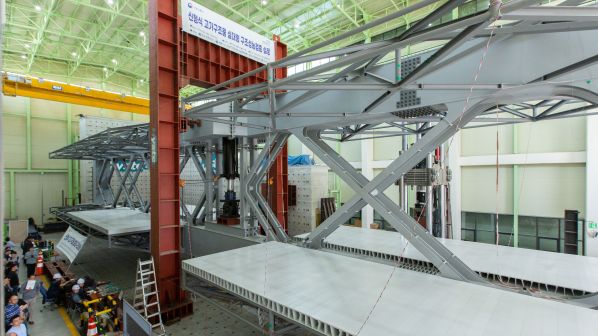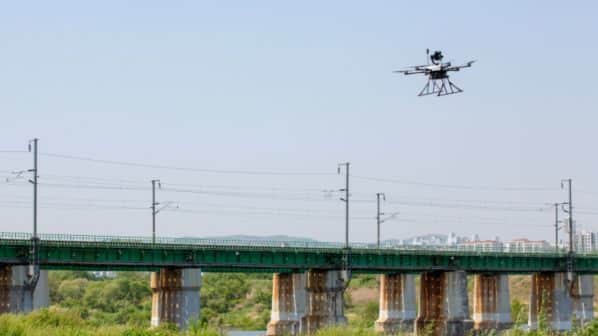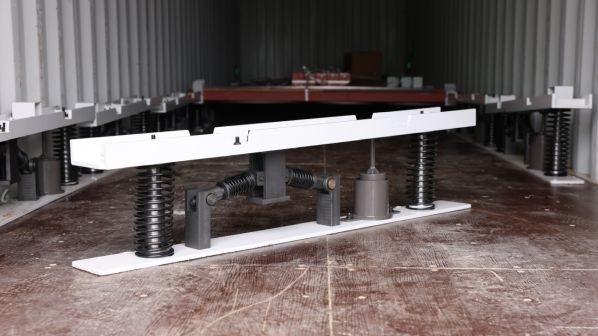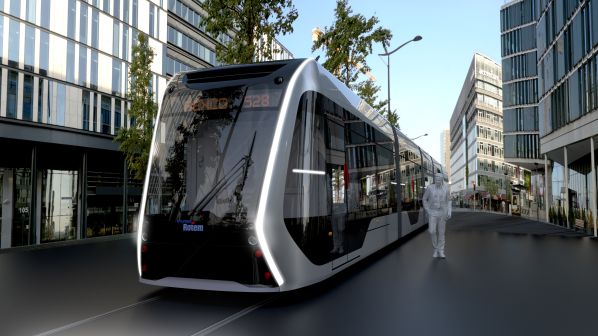THE Korea Railroad Research Institute (KRRI) has announced the development of a new elevated structure for light rail lines that can offer a span of up to 200m between piers without the need for cables, reducing the impact on roads and residents.
The successful development of the new infrastructure, which KRRI claims is the first of its type in the world, was announced on May 26 at an event held at Myongji University’s Hybrid Structural Testing Centre.
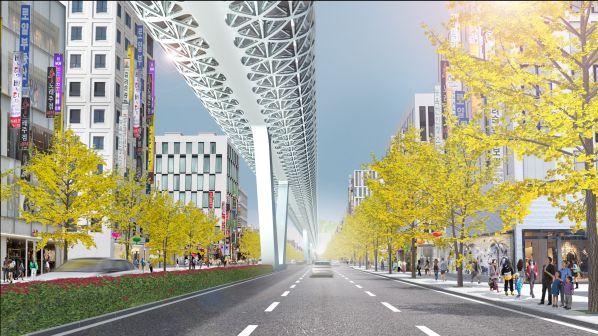
Elevated light rail systems in Korea have previously been built with spans of up to 40m, supporting a heavy superstructure placed on top. The resulting increase in noise and congestion has led many residents to call for new lines to be built underground, which could double construction costs.
Work on the structure, also known as the “Sky Guideway,” began in 2018 as a research project with the Ministry of Land, Infrastructure and Transport (Molit). Lower piers are spaced at maximum intervals of 200m, creating a better feeling of open space below the structure.
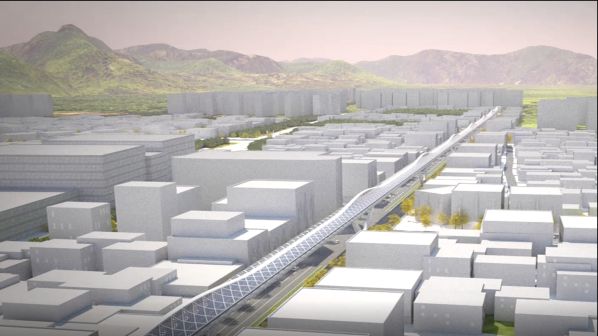
Combined, the upper and lower sections of the Sky Guideway are 20% lighter than existing box girder bridge designs, and 80% lighter than concrete floor slab designs. This reduction in weight allows for a wider maximum span without the need for cables.
The width of the lower columns was also reduced from 2.5m to 1.5m, meaning they encroach on less road space, easing congestion. The upper canopy blocks noise from trains while ensuring operation continues during extreme weather conditions.
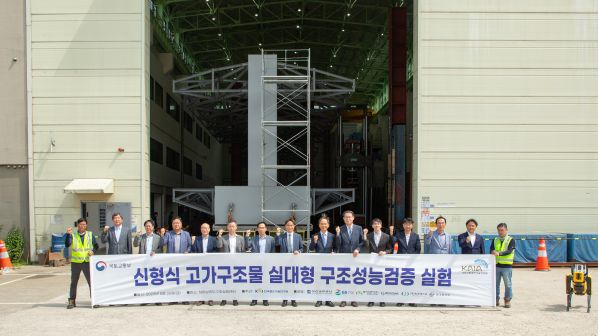
The launch event included a live load test of up to 430 tonnes, which was conducted on the central span, the most vulnerable part of the structure. The test verified safety levels of more than 120% and was carried out in collaboration with Busan Transportation, GS Construction, Dong-A Engineering and other companies.
KRRI says production of the upper and lower sections can take place in factories with assembly of the modules taking place on site using specialist equipment, reducing construction time. Digital twin technology is also deployed, using LiDAR drones and other tools to capture real-time information on construction details, which is then checked against BIM data for the project to ensure accuracy in construction.
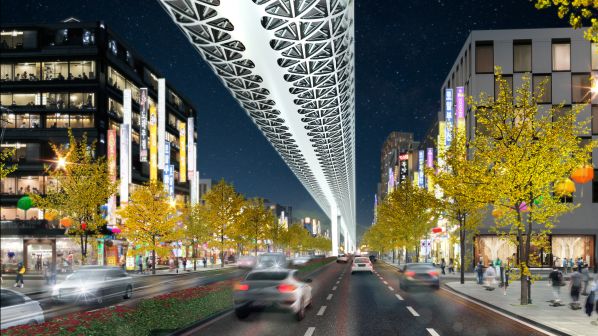
KRRI says that the introduction of the Sky Guideway is expected to revitalise light rail in Korea, which has faced numerous challenges to implementing projects around the country. It will also pave the way for expansion into Southeast Asia and other overseas light rail markets.
“As each local government pursues light rail projects to alleviate traffic congestion caused by urban overcrowding, the development of technologies that can address the issues of urban fragmentation, visual impact, traffic congestion, noise and accidents during severe weather conditions is crucial,” says KRRI research director, Mr Shin Jeong-yeol. “During the remaining research period, we plan to verify the performance of the Sky Guideway and make every effort to implement it across future national routes as soon as possible.”
For detailed data on light rail projects around the world, subscribe to IRJ Pro.
